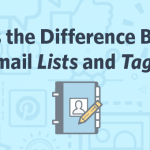Compensation has surpassed career growth as the number-one reason employees will job hunt in 2024, and the unsettling economy is likely to blame. The reality is that costs are rising, salaries are plateauing, employees are struggling, and, in turn, two-thirds have one foot out the door.??
While this year may trigger a Great Resignation II, rest assured—there are actions you can take to avoid a repeat. Leaders can reinvigorate employee engagement and loyalty with fair pay and a spike in emotional salary, according to Achievers Workforce Institute’s (AWI) 2024 Engagement and Retention report. ?
Emotional salary explained?
Emotional salary is the nonmonetary compensation that impacts how people feel about their job, like culture, career, and work-life balance. For instance, getting real and relevant feedback from a manager or having a coworker proactively check in to help you feel supported falls under the umbrella of emotional salary. Facets of emotional salary drive outcomes of validation, belonging, and fulfillment—all meaningful perks extra cash can’t replicate.??
These very feelings allow companies to stand out, even if they can’t outpay all of their competitors. Of course, livable wages are critical for all individuals, but once reasonable compensation is established, emotional salary can outweigh base salary when it comes to engaging and retaining top talent. After all, 72% of employees say they would prefer a job where they feel supported and valued, as opposed to feeling not-so-appreciated and making 30% more.??
When paired with fair pay, a strong emotional salary can lead to higher job satisfaction, catalyzing a more committed employee base. However, like all great workplace strategies, it must be built with intention and C-suite buy-in. AWI uncovered proactive tactics that correlate with higher job commitment and less focus on compensation. Here are three data-backed activations to upping emotional salary:??
Culture alignment?
Culture alignment explores whether a company’s actions are aligned with its stated values, and 82% don’t believe their organization walks its talk. For example, if a company touts that it is people-first, but never considers employees’ feedback, there is a clear level of misalignment, which can quickly push away the brightest talent.??
When words and actions align nicely, employees are nine times more likely to have high job commitment, and there is a three-step approach to making it happen. Leaders must:?
Strong cultural alignment has a myriad of meaningful outputs. For instance, when culture alignment is present, employees are three times more likely to trust their senior leaders, yet again illustrating the value of this investment.??
Recognition?
When salaries are fair but can’t compete with those of big corporations, fear not—organizations can fill the gaps with well-intentioned, well-timed recognition. Hearing “your energy was inspiring in today’s meeting” or “your nonjudgmental demeanor makes me feel safe to ask questions” can go a long way.?
Frequent, meaningful recognition bolsters productivity, job commitment, belonging, and more. When recognition is lacking in an employee experience strategy, employees are 27% more likely than average to pursue new jobs in 2024. Yet when included, they’re 22% less likely to report compensation is the number-one reason they would job hunt.?To build a culture of recognition, leaders should:?
Appreciation goes a long way across the board. People who are paid below the local market rate are 33% more likely to say they will not job hunt if they’re recognized at least monthly. When times are tough for business owners, praise can keep loyal employees loyal.??
Relationships?
That coworker who knows your coffee order. That coworker who saw you cry in the bathroom. That coworker who came to your baby shower. These are the people who bond us to our jobs—so much so, that employees who feel a strong connection to their coworkers are 22% less likely to job hunt in 2024.??
Yet in today’s remote and hybrid landscape, these connections aren’t often built organically, calling for some organizational support. To foster workplace connections, leaders must:?
There are many silos between and within departments getting in the way of meaningful bonds at work. When leaders open the doors for employees, they empower strong connections and turbocharge retention.?
The data is in, and the next steps are laid out. Now it’s in leaders’ hands to make proactive change. It’s time to inject the workforce with a healthy dose of camaraderie and fulfillment, and it starts with upping employees’ emotional salary. Leaders, what’s stopping you from making the change??
(2)








